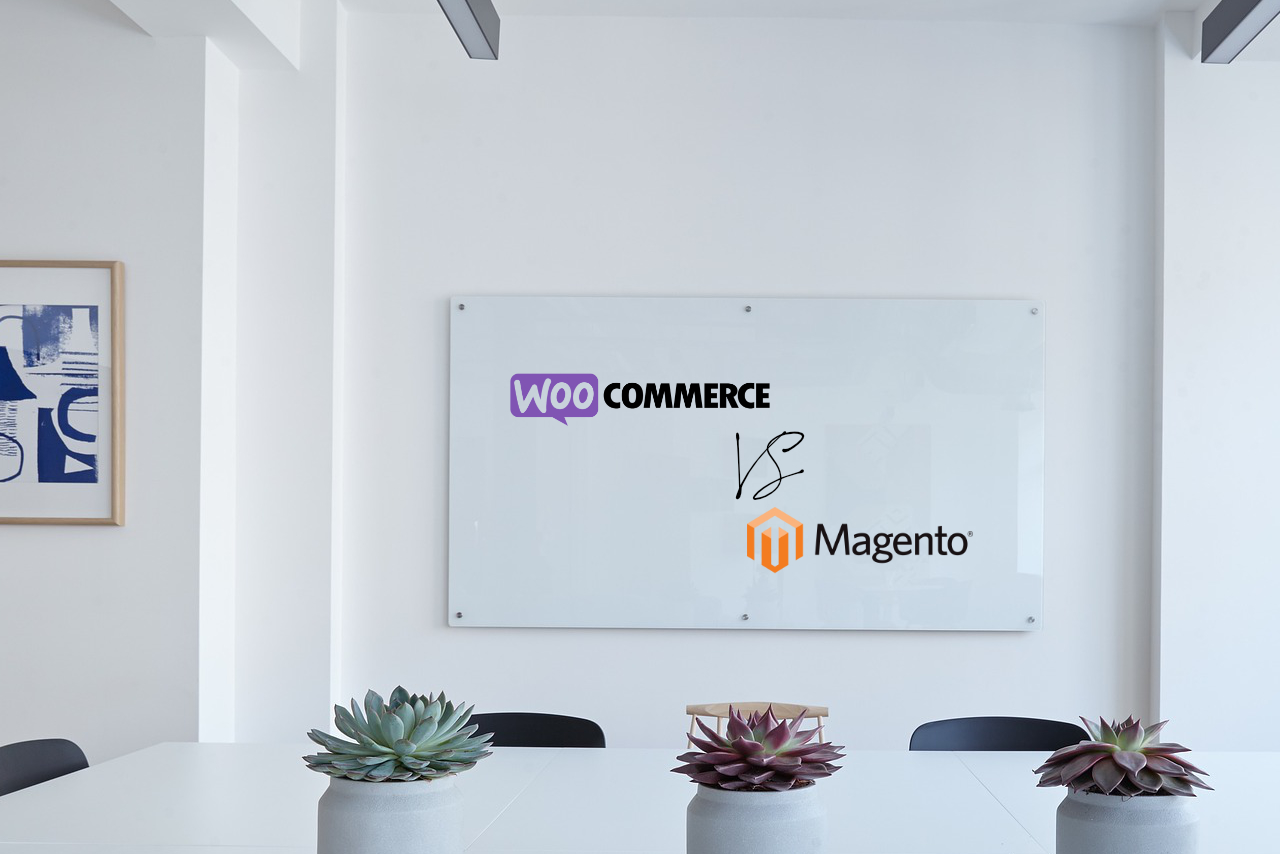Underperforming WooCommerce? This is why you should consider Magento
WooCommerce has long been a go-to choice for small and growing businesses. Its biggest strengths lie in its intuitiveness and affordability. Getting started is simple, without heavy upfront investment and the platform integrates seamlessly with WordPress, which many business owners already know. But as businesses grow, WooCommerce will show its limits. Large product catalogues, high traffic, and complex workflows often require multiple plugins and custom code, which can slow performance and increase maintenance. Throw in the need to integrate with a modern ERP or WMS, and the platform can really start to struggle. This is where Magento steps in, as one of the most solid options if you decide that it’s time to stop the frustrations and migrate the store. Built for scaling businesses, Magento handles complexity with ease, providing the stability and tools needed to support growth and efficiency. In this article, we explore the key differences between the two platforms, the challenges that typically surface as businesses scale, and what you need to consider before committing to a full migration.
We’re experts in e-Commerce development services and we’re here to help you choose the right solution for your business.
Scalability
WooCommerce sits on the WordPress architecture, which means it inherits WordPress’s strength for small‑to‑medium traffic sites but also its general limitations when scaled. The WooCommerce’s plugin ecosystem is extensive, but each additional plugin (for caching, inventory sync, marketplace integration) increases dependency and complexity.
Even if WooCommerce powers and holds roughly 33.4 % of all ecommerce sites, many WooCommerce stores report slower page loads, forced caching layers, and extra hosting complexity when traffic surges into the tens‑of‑thousands per hour, or catalogues expand to 50,000+ SKUs.
Integrating modern enterprise systems (ERP/WMS) adds further strain: each sync job, API call or webhook plugin can increase latency or conflict with legacy PHP/MySQL workflows.
On the other hand, Magento’s architecture is built with scalability in mind: modular framework, advanced database indexing, native support for multiple storefronts and geographies. The Magento Marketplace lists well over 5,000 extensions alone, so you can find pretty much every feature you need for modern eCommerce.
For traffic‑heavy brands and multi‑regional operations, Magento reduces the need for hacky plugin stacks. Instead you get one coherent environment with optimized caching, full‑page vs Varnish layering, built‑in API frameworks and enterprise‑grade infrastructure readiness. In practice, brands using Magento report being able to handle simultaneous high‑volume campaigns, thousands of SKUs and complex pricing structures without the platform becoming the bottleneck.
Customisation & Architecture
While WooCommerce offers great agility for early‑stage stores (thanks to WordPress familiarity, low cost, vast theme/plugin library), when you attempt to implement custom workflows (for instance subscription models, multi‑vendor channels, complex discounting or marketplace operations), you often rely on a patchwork of separate plugins and custom code.

For example: a subscription box service may need a subscriptions plugin, a notifications plugin, a CRM sync plugin, and bespoke code to handle renewal logic. Each plugin has its own update cycle, potential conflicts, and performance implications. This results in higher maintenance overhead and a risk of compatibility issues with WordPress core updates.
Magento’s value lies in its enterprise‑ready architecture. Under the hood you get a modular framework where custom workflows, multi‑store logic, bespoke pricing rules, and native integrations can be built within the core platform rather than appended. The Magento Marketplace and developer ecosystem support this: top extensions include advanced layered navigation, one‑step checkouts, multi‑vendor modules.
Brands using Magento leverage this architecture to manage diverse workflows, without relying on tens of disjointed plugins and risking fragility.
Inventory & Order Management
WooCommerce handles core inventory well for simple online‑only scenarios. But once the business sells across channels (physical stores, marketplaces, B2B portals), the picture changes. Synchronising inventory, handling warehouses or drop‑ship partners often requires one or more third‑party plugins. A dedicated marketplace plugin ecosystem exists (e.g., YITH Multi Vendor), but each adds its own update and performance risk. For companies handling tens of thousands of SKUs across multiple fulfilment centres, managing WooCommerce becomes an operations challenge.
Magento on the other hand is built with multi‑channel, multi‑warehouse and complex order workflow in mind. Its core supports multiple inventory sources, configurable back‑order rules and native “shops within shops” logic. Retailers like large global brands have leveraged it to synchronise thousands of SKUs across regions and channels without resorting to a spaghetti of plugins. For a client migrating to Magento, this translates into streamlined warehouse integrations, better fulfilment accuracy, fewer manual interventions and a platform that supports omnichannel rather than being retrofitted to it.
Security & Compliance
Since WooCommerce runs on WordPress and depends heavily on plugins for extended functionality, security becomes a shared responsibility.

Core WordPress updates, plugin updates, theme updates, hosting environment all need frequent attention. For example, a known vulnerability in a WooCommerce plugin, Customer Reviews for WooCommerce, impacted over 80,000 sites via an XSS flaw.
Magento is well known for its security features: regular official patches, two‑factor admin access, granular roles and permissions, PCI compliance frameworks built into the ecosystem. While no platform is immune, Magento reduces the number of moving parts (fewer disparate plugins) and is purpose‑built for large‑scale commercial operations.
For a business migrating from WooCommerce, the security benefit is real: fewer plugin dependencies, a more unified platform, fewer hidden vulnerabilities, plus Adobe’s regularly launched security patches.
Analytics & Reporting
WooCommerce provides basic reporting out of the box (sales by day, product, etc). However, if you want deeper insights like funnel conversion, customer lifetime value, region‑by‑region performance, headless data exports or marketing channel attribution, you often need additional plugins or custom exports. Each added plugin or custom report introduces maintenance overhead and risk of data silos. Some of these solutions are third‑party and may not integrate cleanly with the rest of your stack.
For Magento, core analytics, custom dashboards, and a rich marketplace of extensions enable advanced insights natively. Brands using Magento can monitor performance across multiple storefronts, geographies, channels and merge that into one unified backend. Magento’s marketplace for AI and analytics extensions is growing strongly (see next section). The up‑shot for clients: a single platform for operations, commerce, and analytics – reducing internal friction, avoiding data fragmentation and enabling faster decisions based on unified metrics.
Readiness for Agentic Commerce
WooCommerce does allow automation and personalisation via plugins (for example segmentation, email trigger tools, search plugin enhancements). But scaling to true “agentic commerce” like real‑time AI recommendations, intelligent search, automated replenishment, dynamic pricing, can be challenging. Because WooCommerce is plugin‑based and sits on WordPress, each AI integration tends to be a standalone tool with its own data silo, making holistic automation harder.
Magento is designed for “agentic commerce”. Native support for AI‑powered tools (such as through Adobe Sensei when using Adobe Commerce) is available, and the marketplace features a suite of robust AI extensions. Here are a few examples:
Magento 2 AI Product Recommendation from Webkul utilizes machine learning algorithms to analyze customer behavior and deliver personalized product recommendations. This not only enhances the shopping experience but also boosts average order value and customer retention.
In-Store Pickup & Collect from MageDelight, available for both Adobe Commerce and Magento OS, brings click-and-collect to Magento.
Payment Services for Adobe Commerce is an extension that brings native payments with lower integration risk and higher reliability inside your Commerce Admin and a streamlined checkout.
Magento 2 AI Image Search from Meetanshi does exactly what it says on the tin – it uses AI to search products by image, enabling faster product discovery.
Moreover, Magento stores can evolve into dynamic, intelligent shopping ecosystems by using their robust APIs to integrate AI-driven workflows. For instance, platforms such as LangFlow offer visual drag-and-drop tools that allow marketers or developers to build pipelines for product recommendations, content automation and customer support agents, without deep coding.
Integration of LangFlow is typically done via APIs or webhooks. Once connected, AI agents can execute complex tasks dynamically, giving you a seamless, agentic, AI-driven storefront ecosystem.
Finally, let’s talk costs
When it comes to migrating from WooCommerce to Magento, the truth is that costs can only be estimated accurately after a full audit of your current store. Every project is different. The final effort depends on the volume of products, the number of product attributes, how many orders and registered customers need to be moved, and whether related products must be migrated as well. We also look at existing discount rules, coupons, and promotional logic, plus any payment-gateway integrations you rely on. If your Magento build needs to connect to an ERP, retain the existing URL structure, carry over technical setups (GA4, rich snippets, canonical tags), or replicate all existing functionality, this will shape the scope. The same applies if you want new features added through extensions, or if you require a custom Magento theme rather than adapting a purchased one. Once we have this information, we can prepare a clear preliminary estimate and outline realistic timings for the full migration.
If you want to know more about our list of services at Clever++, please visit our website.




